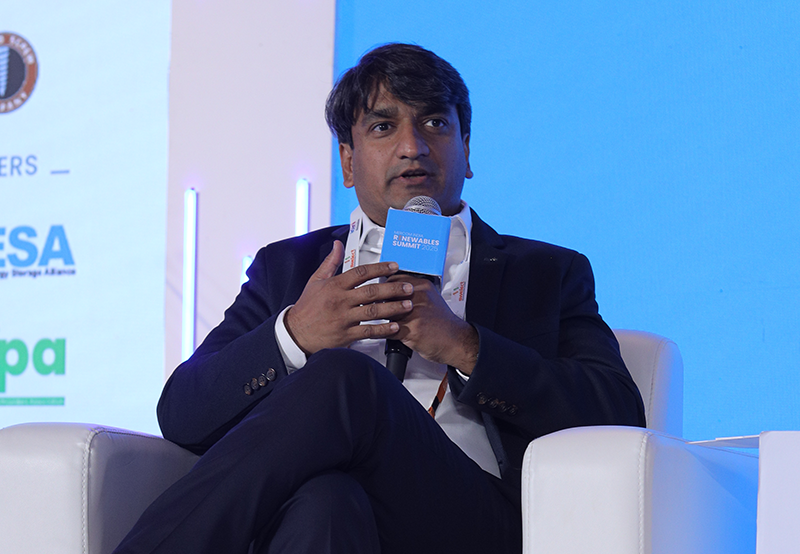EPC Players Must Set Reasonable Deadlines Amidst Equipment Crunch: Interview
EPC companies are demanding a solution to the equipment shortages
August 21, 2025
Follow Mercom India on WhatsApp for exclusive updates on clean energy news and insights
In an interview on the sidelines of the Mercom India Renewables Summit 2025 held in New Delhi on July 24 and 25, 2025, Vaibhav Roongta, Chief Business Officer at Rays Power Infra, spoke about the bottlenecks in engineering, procurement, and construction (EPC) projects and the company’s expansion plans.
Give us an overview of your company and your operations in India
Rays Power is more than a decade old. We started in the solar space, but now we are a full-fledged renewable energy EPC and project developer. We are also entering the independent power producer (IPP) segment.
We are starting our cell manufacturing unit, so it is a full bouquet of services that we try to offer to the industry players. We have commissioned over 1.8 GW of projects. We have another 2 GW of projects in the pipeline.
We have 1.5 GW of letters of award for which we are waiting for power purchase agreements to get signed. We also have about 5 GW to 6 GW of connectivity. We are building our company for the next five years.
What are the primary challenges faced by EPC projects?
For the extra-high-voltage switchyards serving 220 kV to 400 kV lines, we are experiencing an increase in lead times. It has now gone up from four to six months to eight to 10 months. The supply of a 400 kV power transformer takes almost 20 months.
There is a shortage of such equipment, and we need to address this issue. The 220 kV switchyard has become a basic requirement, as we are primarily focusing on projects of at least 300 MW. The larger the project, the bigger the need for 400 kV switchyards.
The time for acquiring land parcels has increased. Other challenges are on the transmission lines and the right-of-way.
How can EPC companies ensure the timely completion of projects?
Companies should not overpromise to their customers. Earlier, you could complete the projects within six to eight months, if you had just to connect the 33 kV balance of system, but the timelines have slightly increased due to the supply times for various equipment.
The availability of labor and machinery has also become difficult as the industry is booming. So, companies should not be overly aggressive with timelines.
EPC players need to get more disciplined in terms of project management, which must become more robust, accurate, and automated.
Can you share the medium-term and long-term expansion plans for Rays Power Infra?
We are already backward integrating into cell manufacturing, in addition to the module manufacturing that we plan to undertake ourselves. From a forward integration perspective, we are getting into the IPP space as well.
Earlier, we were involved in development and EPC projects for state transmission utilities, focusing on 1,500 MW for the commercial and industrial sector. Now, we are attempting to replicate this effort on a utility-scale.
Green hydrogen is the next big story, and it is part of our long-term plan. We are right now exploring those smaller green hydrogen EPC projects and some on the development side.
(Note: Sections of the interview have been paraphrased for better reading. Check out the video for a full chat)
